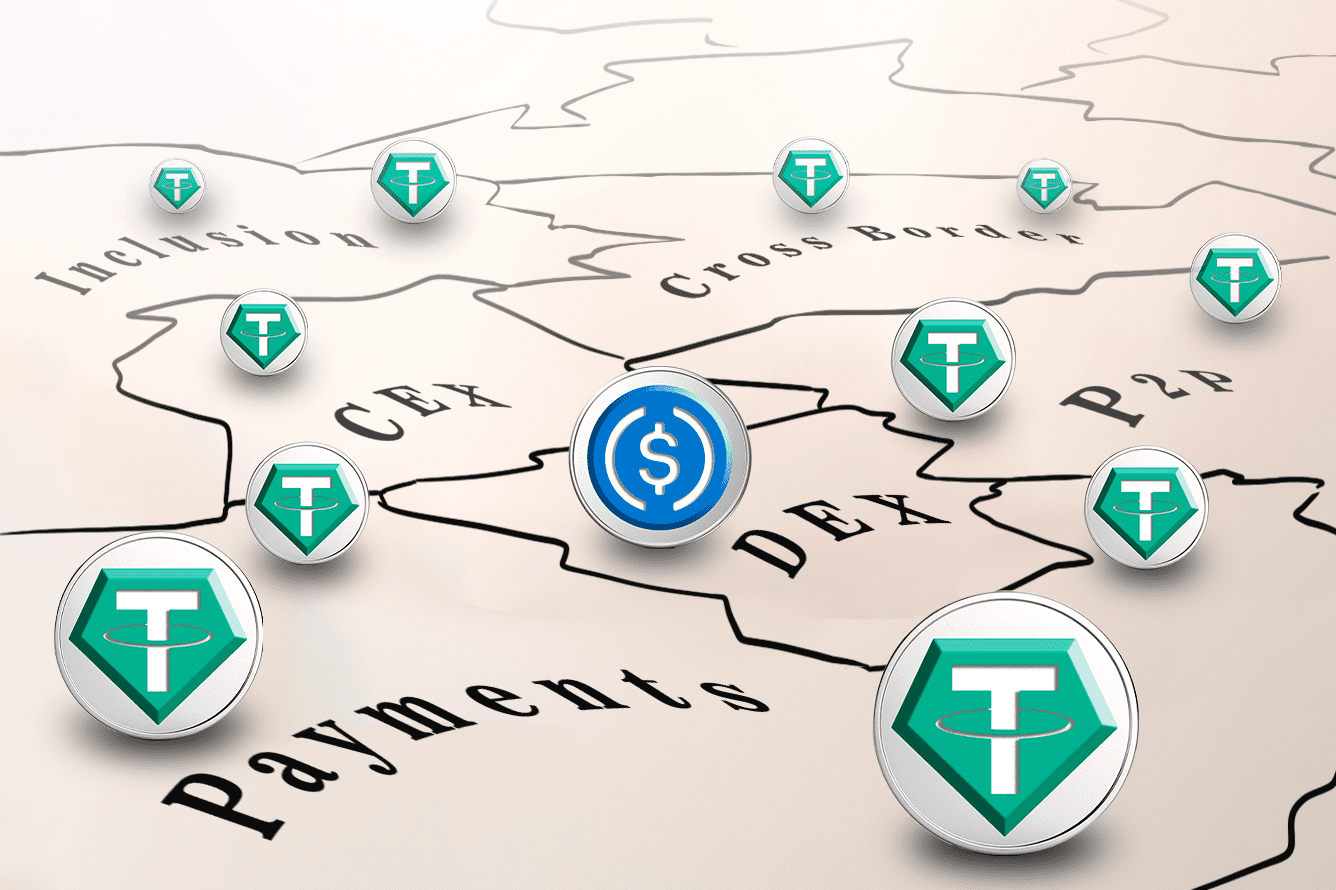
US dollar stablecoins might be a key part of getting the general public to more widely adopt digital assets. As of now, the total market capitalization of all stablecoins stands at approximately $123.9 billion, with a daily trading volume hovering around $40 billion, according to CoinGecko. Interestingly, the trading volume for stablecoins exceeds that of both Ethereum and Bitcoin combined. This underscores the prevalent use of stablecoins and their potential for further growth.
According to the brokerage firm Bernstein, the stablecoin market is projected to surge to $2.8 trillion over the next five years. The integration into consumer platforms, the use of stablecoins in remittances, and the rise of decentralized finance are all factors anticipated to drive this growth.
At present, just two stablecoins, USDT and USDC, overwhelmingly dominate the market. Together, they account for approximately 90% of the total market share and around 85% of the daily trading volume. Although both of these stablecoins are centralized, they are widely used in both centralized and decentralized finance.
Notably, while USDT dominates the market on centralized exchanges (CEXs), USDC has gained significant traction on decentralized exchanges (DEXs).
Currently, USDT holds a 68% market share by volume on CEXs. The coin is used by most centralized exchanges and is far ahead of other contenders like BUSD, TUSD, and USDC.
source: 21shares.com
The situation on decentralized exchanges looks different. When it comes to trading volume on these exchanges, USDC is currently the market leader, accounting for 54.5% of the total volume across all DEXs. USDT is in second place with a 36.9% share.
As seen from the chart below, USDC lost some market share in March of this year due to its depegging following the collapse of Silicon Valley Bank. Nevertheless, the project has still maintained its leadership.
source: dune.com
Uniswap V3, attracting a substantial 42% of the DEX market in trading volume, clearly favors USDC as its stablecoin of choice, with a significant 63.9% market share across all pairs.
There could be several reasons for such a widespread adoption of USDC on decentralized exchanges.
One likely factor is the ongoing FUD surrounding Tether, the company behind USDT, and its reserves. Prior to the depegging of USDC, many DeFi users and DEX traders viewed USDC as a safer alternative to USDT. Despite the issues, this perspective still appears to hold true.
Moreover, while Tether has primarily concentrated on centralized exchanges, Circle has actively fostered relationships with DeFi protocols. USDC is not only prevalent in Uniswap V3 but is also widely adopted across various DeFi platforms. It ranks among the top three supplied coins on AAVE and holds a significant share as a reserve coin for MakerDAO.
Another factor is that USDC appears to be more regulatory-friendly. Circle, the company behind USDC, has consistently been more transparent than Tether. However, it's worth noting that this year, Tether has also made significant efforts to enhance its transparency.
It’s interesting to Observe, that while the DeFi community aims for decentralization, it might care more about trust and regulations than others.

